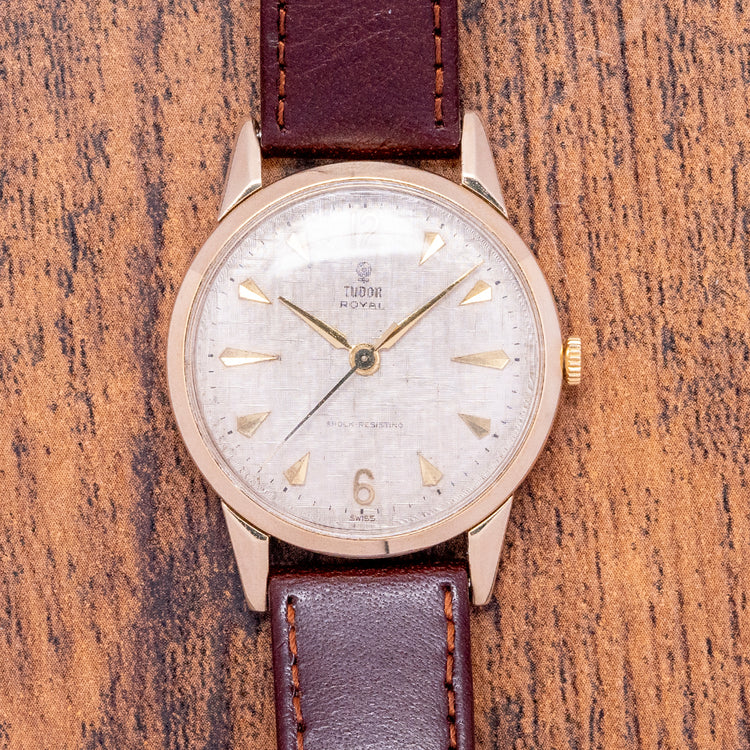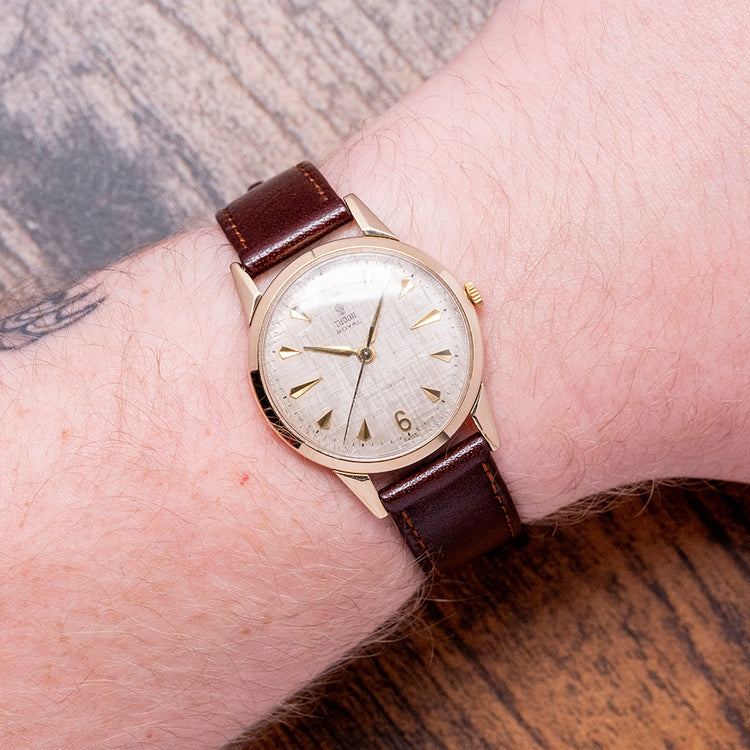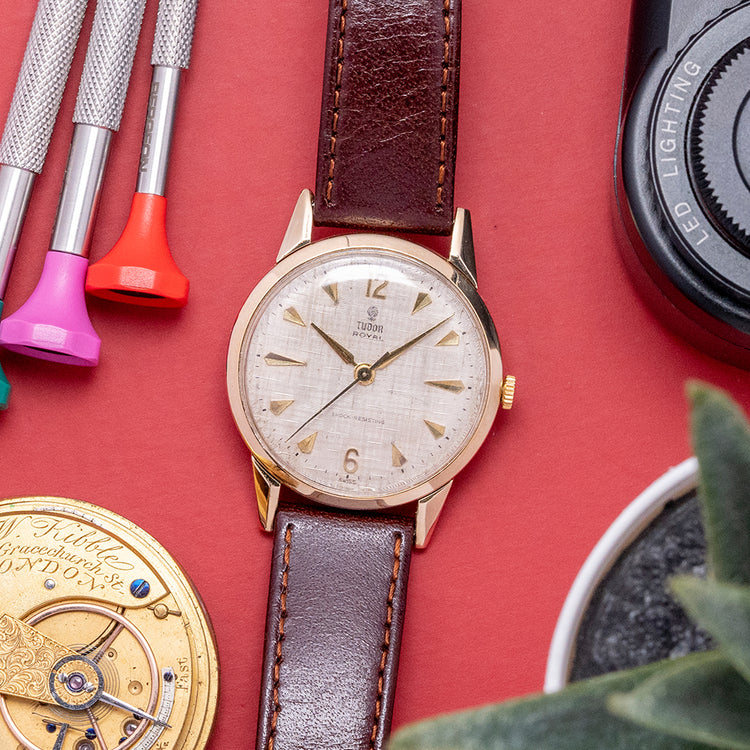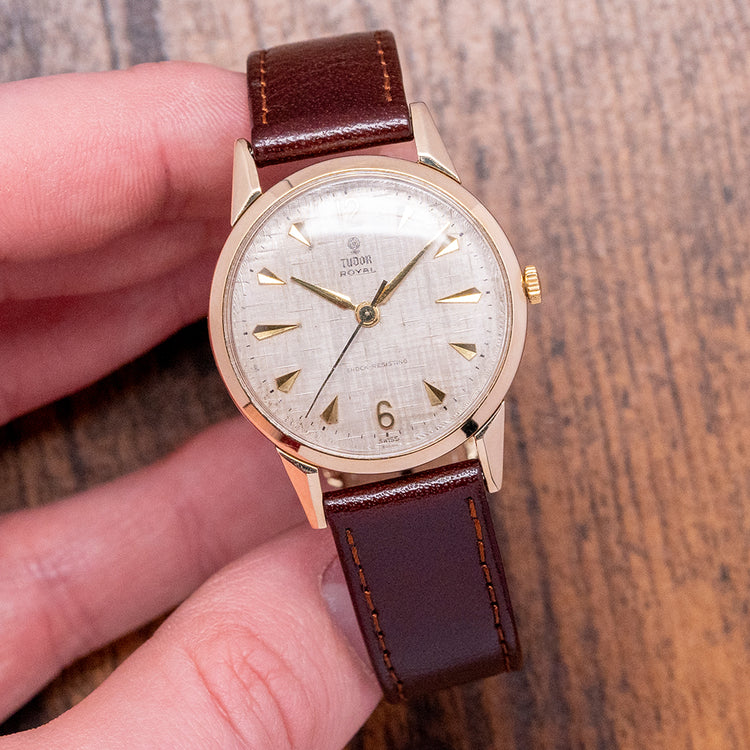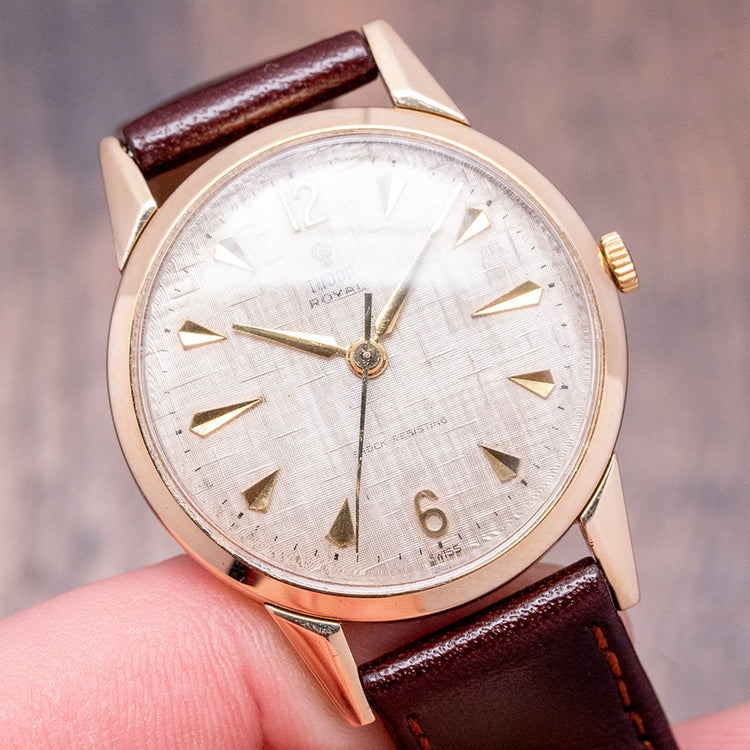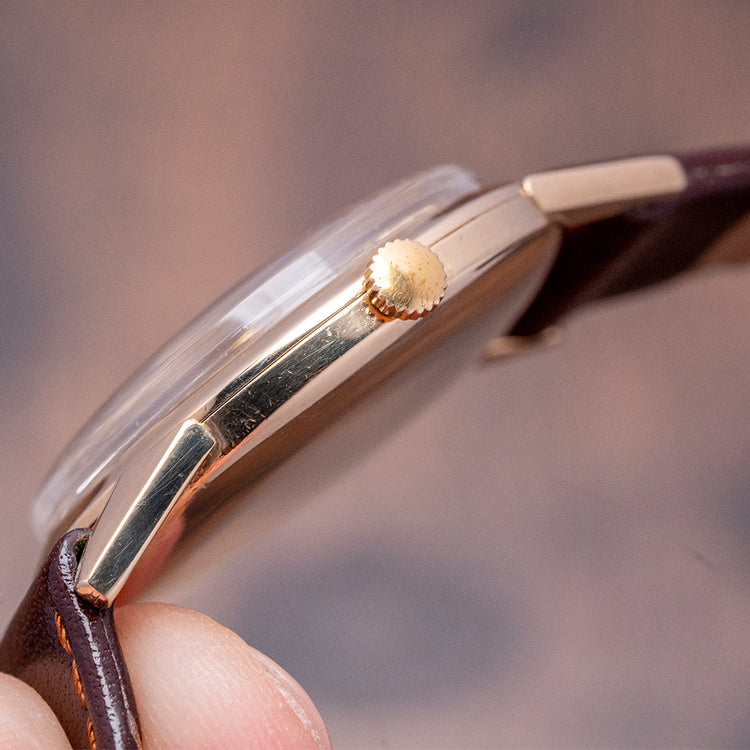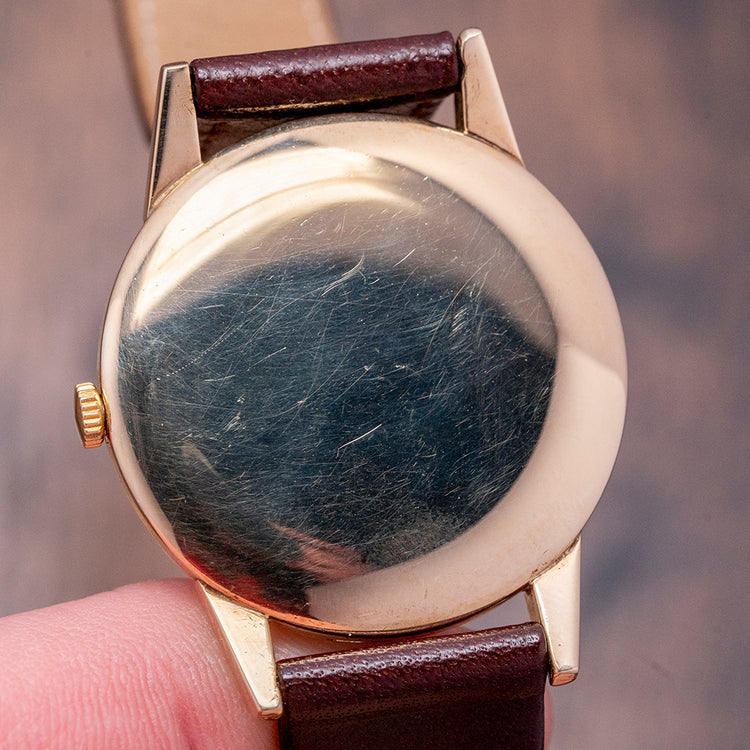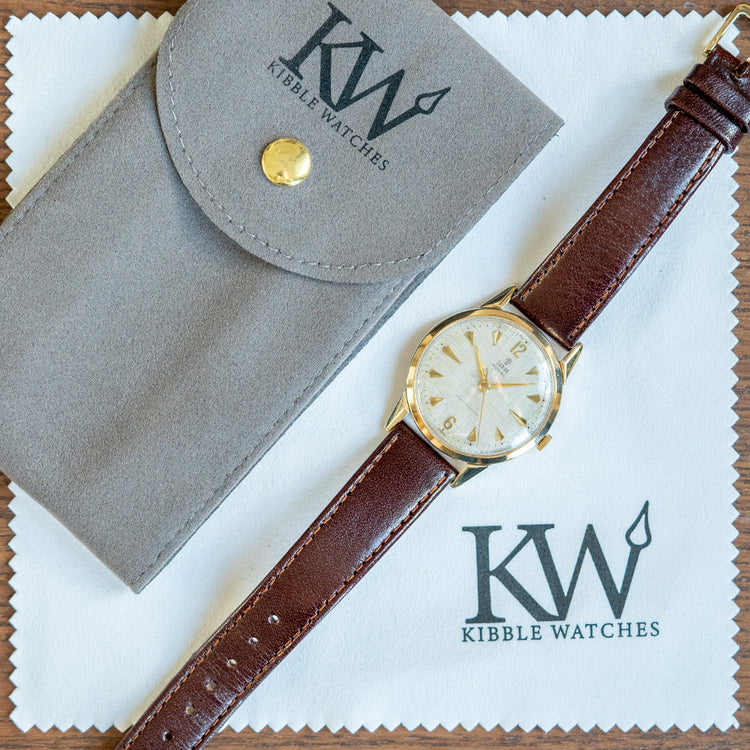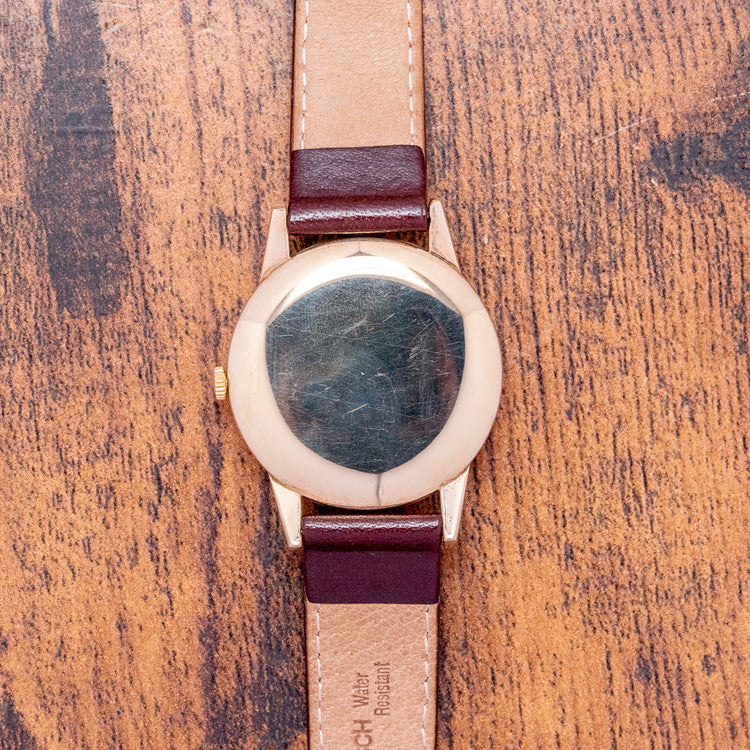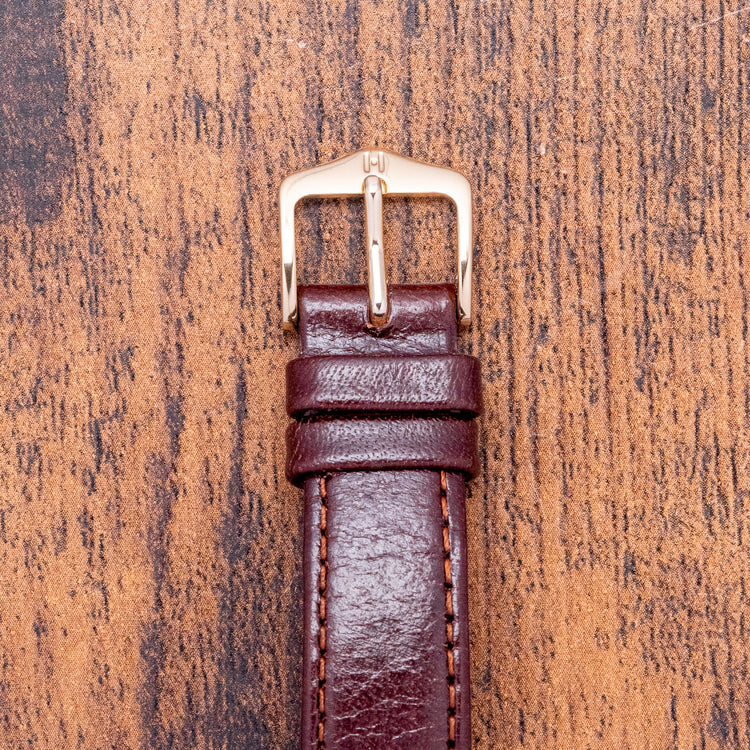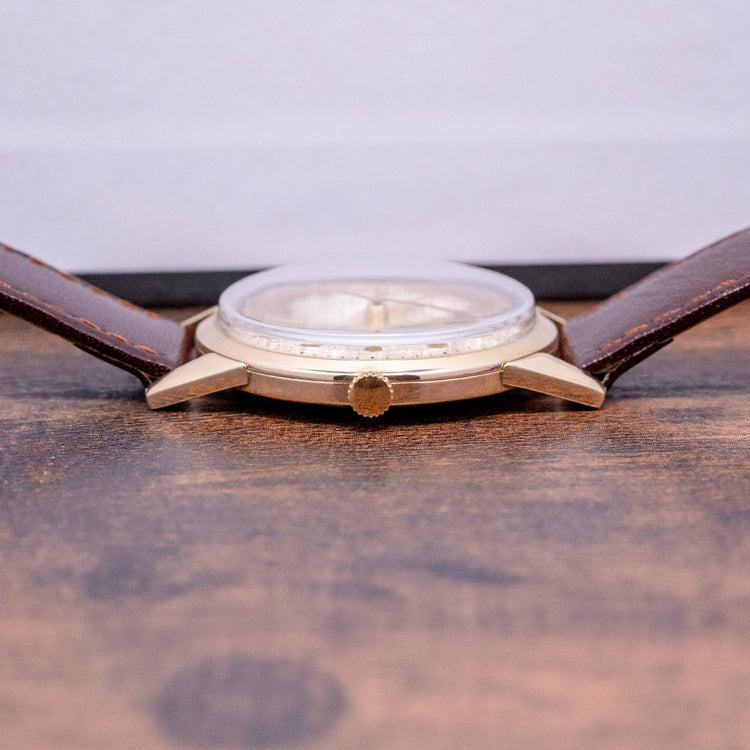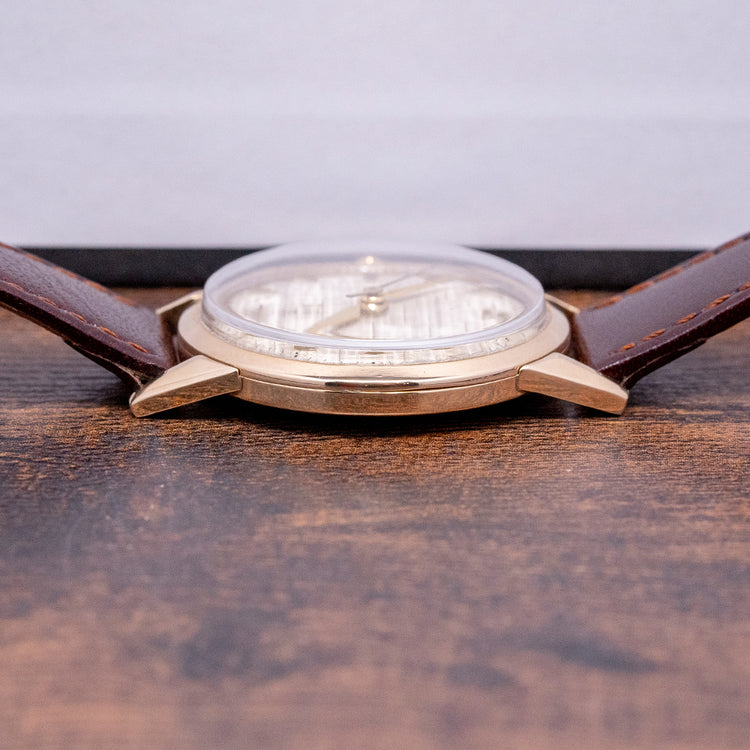More Information
Description
More
Less
Here, we have a rare 1962 Tudor Royal 9ct Gold Linen Dial Mechanical, with a curvaceous 32mm round 9ct yellow gold Oyster case with tapered lugs, and a lug-to-lug length of 40mm and a thickness of 9mm ensures a comfortable fit on your wrist. On the right side, a signed crown. The slim polished bezel holds a domed crystal above a stunning and rare linen dial. An outer minute track with gilt facet dart hour markers and gilt applied Arabic numerals at 12 and 6 shine as you move your wrist. Gilt lance hands are complemented by a fine tapered sweeping centre seconds hand. Text on the dial is precisely printed; at 12 o’clock, we have the Tudor Rose motif “Royal” underneath and at 6 o’clock “Shock-resisting”. On the reverse, a screw-down case back. Inside a manually wound Tudor, 17 jewels movement. It comes paired with a well-suited 16mm leather strap.
Points of Mention
More
Less
Personal Note
More
Less
Specification
More
Less
Movement : Manually Wound Tudor 17 Jewels
Age : Circa. 1962
Year : 1962
Case Size : 32mm
Case Thickness : 9mm
Lug to Lug : 40 mm
Lugs : 16mm
Condition : Pre-Owned
Box and Papers : None
Case Material : 9ct Gold
Warranty : 12-Months NON-Waterproof Warranty
The wrist model's wrist size is 7inch
About Tudor
More
Less
Description
Here, we have a rare 1962 Tudor Royal 9ct Gold Linen Dial Mechanical, with a curvaceous 32mm round 9ct yellow gold Oyster case with tapered lugs, and a lug-to-lug length of 40mm and a thickness of 9mm ensures a comfortable fit on your wrist. On the right side, a signed crown. The slim polished bezel holds a domed crystal above a stunning and rare linen dial. An outer minute track with gilt facet dart hour markers and gilt applied Arabic numerals at 12 and 6 shine as you move your wrist. Gilt lance hands are complemented by a fine tapered sweeping centre seconds hand. Text on the dial is precisely printed; at 12 o’clock, we have the Tudor Rose motif “Royal” underneath and at 6 o’clock “Shock-resisting”. On the reverse, a screw-down case back. Inside a manually wound Tudor, 17 jewels movement. It comes paired with a well-suited 16mm leather strap.
Points of Mention
Personal Note
Specification
The Brand
Enquire or Book an Appointment
Would you like to discover further details about this watch, or perhaps arrange an appointment to view and try it on? Complete this form and a member of our team will get back to you shortly.
You May Also Like


























